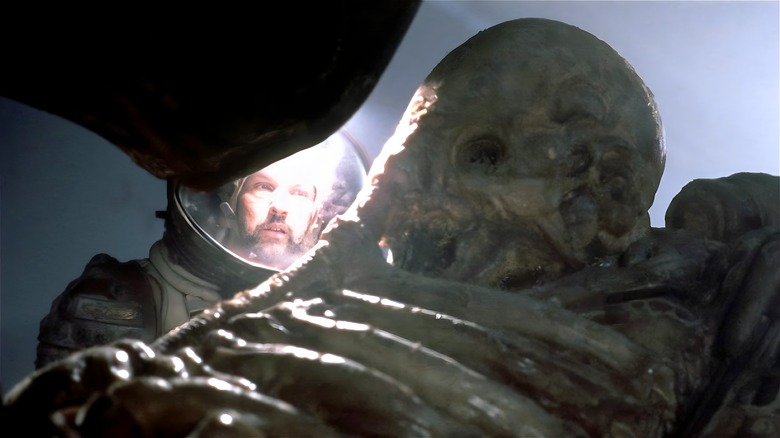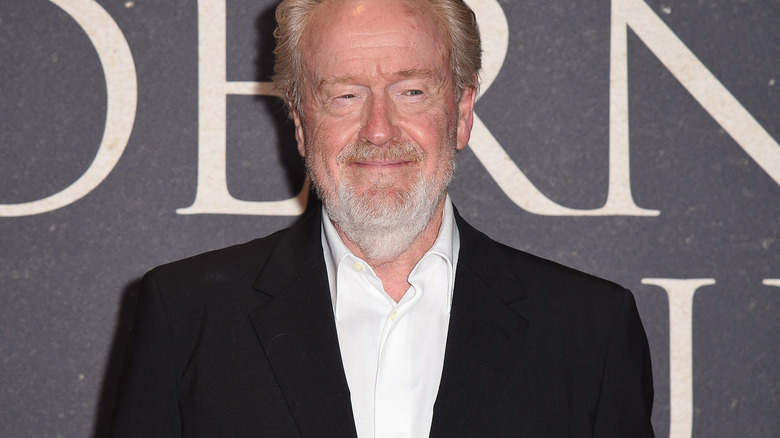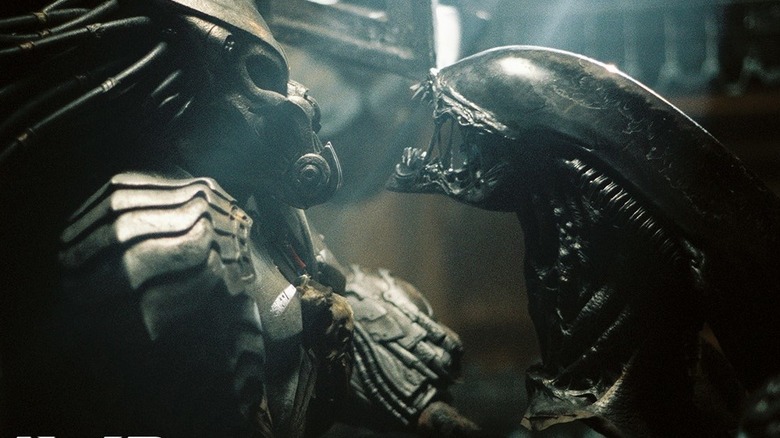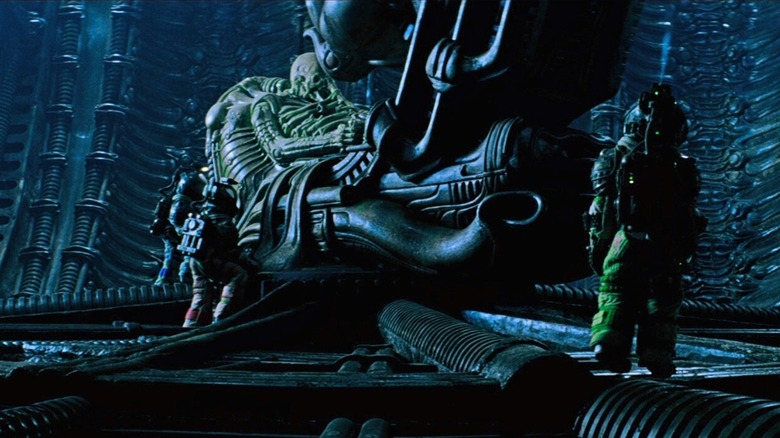Alien Sequels Must Drop The Xenomorph Obsession & Embrace The Genius Of H.R. Giger
H.R. Giger is the reason why so many horror fans are scared of space, where no one can hear you scream. The Swiss-born painter was instrumental in creating the xenomorph from the first "Alien" movie, which arguably remains the most terrifying outing in the entire franchise. However, while Giger and his special effects team won an Oscar for their work on the film, the artist didn't have much involvement in the sequels.
Now, obviously, Giger's influence is felt throughout the saga. From facehuggers to deacons to runners to weird hybrids, xenomorphs come in all shapes and sizes, but they wouldn't exist if Giger didn't establish such a unique look for the species in the first place. At this point, though, the unfortunate truth is that despite their various forms, the xenomorphs have grown stale in a franchise that's become too reliant on these egg-headed annihilators. In order for the "Alien" universe to truly evolve, these monstrosities should be benched for a while.
That might sound preposterous, but think about it. Xenomorphs are scary, sure — but they were just one piece of the iconic visual puzzle that comprised the original film. Going forward, the "Alien" franchise has the potential to expand its creature roster and ideas. It's time for the saga to soar to different planets, discover new life forms, and scare audiences with fresh ideas. And the best way to do that is by drawing from the past — that is, looking at some of Giger's other creations, and finding a place for them in Ridley Scott's underexplored sci-fi horror world.
Ridley Scott is bored of the xenomorph, so let's make him happy again
"Prometheus" isn't the most universally adored movie in the "Alien" franchise. Whether you love or hate the prequel, though, at least it differentiates itself from the rest of the franchise. The film is more interested in exploring creationism, artificial intelligence, and the history of the Engineers, as opposed to being just another movie about xenomorphs causing havoc. Immediately after that was "Alien: Covenant," which ruins all of that progress, but let's focus on the positives that "Prometheus" brought to this franchise and forget its sequel exists.
Above all else, it's clear that Ridley Scott was losing interest in the xenomorphs when he made "Prometheus" and "Covenant." While speaking to The Hollywood Reporter, the legendary director said that he wanted to, in his words, "re-evolve the universe of the alien," because he felt the xenomorphs had run out of gas. And while "Prometheus" and "Covenant" are very different movies, what they do have in common is a concentration on the horrors of artificial intelligence, which is actually topical now that services like ChatGPT exist to make human beings obsolete.
There's an argument to be made that Scott's attempts to expand his sci-fi universe were mishandled with "Prometheus" and "Covenant." Artificial intelligence arguably isn't more interesting than killer aliens, either. But that shouldn't deter future filmmakers from bringing new ideas to this franchise, regardless of what they might be. Xenomorphs will always have a place, but what else is out there?
The Alien franchise has always teased a larger universe
There are plenty of moments throughout the "Alien" franchise that hint toward a larger universe that's full of storytelling possibilities. For example, in "Alien," Ripley (Sigourney Weaver) and the Nostromo crew aren't surprised to learn about the existence of an alien life form. The xenomorph is a new species to them, but they never explicitly state that it's the only alien they've ever encountered.
Similarly, the marines in "Aliens" talk about going after the xenomorph like it's just another run-of-the-mill "bug hunt." Once again, these people haven't encountered this specific creature in the past, but their phrasing suggests that they're used to hunting gruesome creatures throughout space.
For more direct references to other entities existing in the "Alien" universe, look no further than the comics. "Alien: Reapers" features humanoid green monsters who feast on facehugger flesh to survive. Plus, it's already been established by now that the "Alien" mythos is part of the same world as the "Predator" franchise, so why can't there be other distinct extraterrestrial planets with their own creatures and cultures out there? The upcoming "Alien" TV series and future movie installments need to adopt the mindset of the creators behind the Expanded Universe stories. However, that doesn't mean they can't also go back to the original source of the xenomorph for inspiration as well.
H.R. Giger left behind a treasure chest of disturbing creatures
In a perfect world, H.R. Giger would still be alive and willing to come up with concepts for new creatures to use in the "Alien" franchise. However, his general approach to art complements the franchise — a saga that's inspired by ideas such as creationism and cosmic horror — and his existing paintings could be used to inform spectacular movie monsters.
The "Alien" franchise has always been inspired by the works of H.P. Lovecraft, which is why "Prometheus" killed Guillermo del Toro's "At the Mountains of Madness" movie over a decade ago. Giger's first published compendium, "Necronomicon," is named after the forbidden grimoire at the center of some of Lovecraft's tales of terror, and it is full of portraits of disturbingly awesome creatures — ranging from bizarre aliens to mutilated machines — that make the Great Old Ones look handsome in comparison. In fact, Ridley Scott picked up a copy of "Necronomicon" in the late 1970s, and he was so blown away by the nightmarish visuals that he offered Giger the "Alien" gig.
"I took one look at it, and I've never been so sure of anything in my life. I was convinced I'd have to have him on the film," Scott told Starlog.
So, what better way to honor Giger's influence on the franchise than by bringing some of his other monstrosities into the mix?



